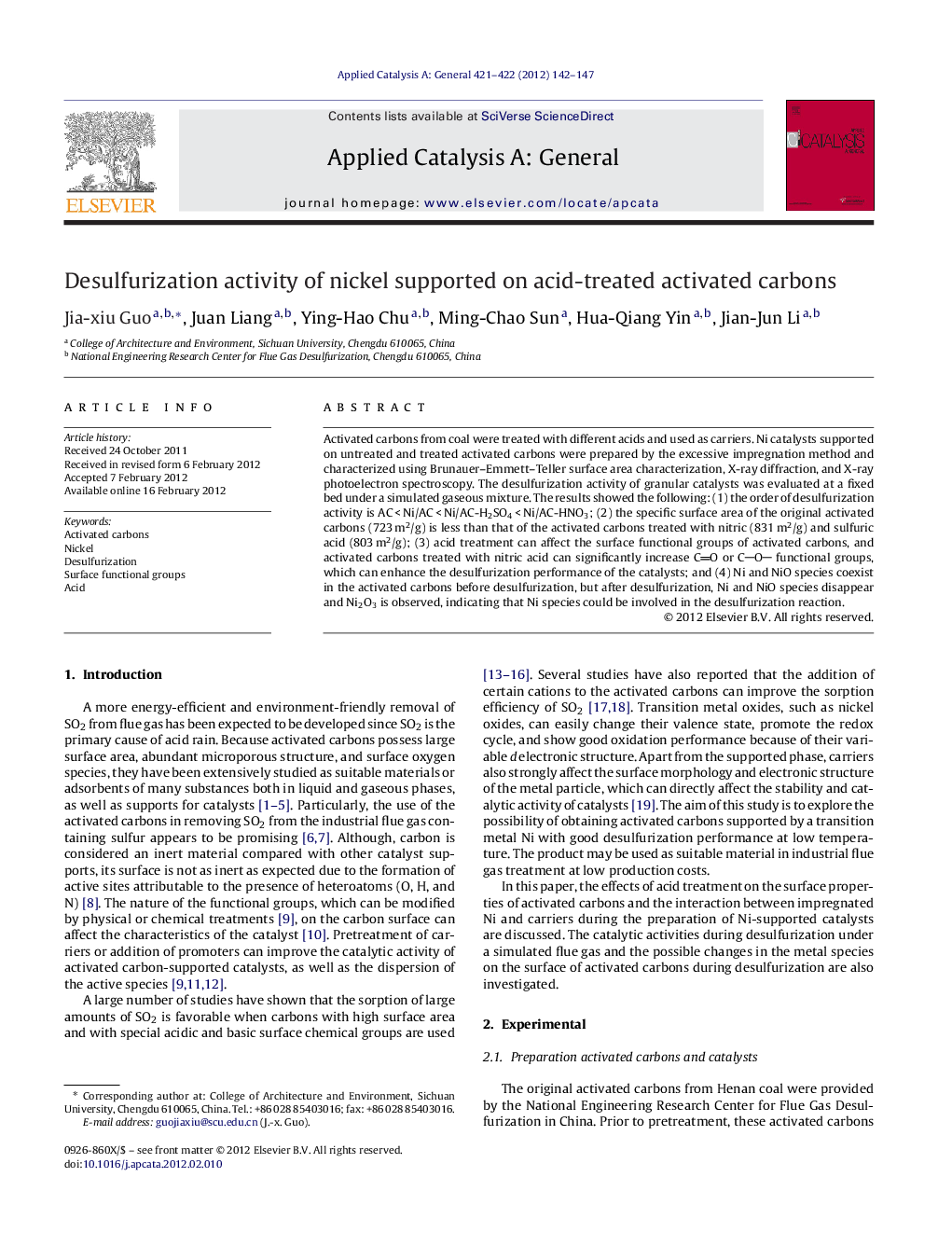| Article ID | Journal | Published Year | Pages | File Type |
|---|---|---|---|---|
| 40985 | Applied Catalysis A: General | 2012 | 6 Pages |
Activated carbons from coal were treated with different acids and used as carriers. Ni catalysts supported on untreated and treated activated carbons were prepared by the excessive impregnation method and characterized using Brunauer–Emmett–Teller surface area characterization, X-ray diffraction, and X-ray photoelectron spectroscopy. The desulfurization activity of granular catalysts was evaluated at a fixed bed under a simulated gaseous mixture. The results showed the following: (1) the order of desulfurization activity is AC < Ni/AC < Ni/AC-H2SO4 < Ni/AC-HNO3; (2) the specific surface area of the original activated carbons (723 m2/g) is less than that of the activated carbons treated with nitric (831 m2/g) and sulfuric acid (803 m2/g); (3) acid treatment can affect the surface functional groups of activated carbons, and activated carbons treated with nitric acid can significantly increase CO or CO functional groups, which can enhance the desulfurization performance of the catalysts; and (4) Ni and NiO species coexist in the activated carbons before desulfurization, but after desulfurization, Ni and NiO species disappear and Ni2O3 is observed, indicating that Ni species could be involved in the desulfurization reaction.
Graphical abstractFigure optionsDownload full-size imageDownload high-quality image (79 K)Download as PowerPoint slideHighlights► Acid treatment can increase the surface area of activated carbon. ► Different acid treatment can influence surface functional groups of activated carbon. ► Nitric acid treatment can increase CO or CO functional groups and Ni dispersion. ► Ni and NiO species coexist on the activated carbon before desulfurization. ► Ni2O3 are observed and Ni and NiO species are disappeared after desulfurization.
